How to maintain your car during Covid-19
Tips to maintain your car during Covid-19
Chances are you’re not driving as often during the current Covid-19 crisis and when you do drive, you’re probably making short trips to the grocery store. Job loss due to Covid-19 has even forced some families to store one of their vehicles to save on insurance costs. But driving short distances and letting a vehicle sit idle for long periods can damage your vehicle’s battery and repeated short drives can cause accelerated engine wear. Here’s some advice on how to maintain your car during Covid-19 to prevent battery damage and prevent engine wear.
Sitting for weeks on end is a battery killer
A lead-acid car battery self discharges about 5% per month depending on the ambient temperature. The higher the temperature, the faster the rate of self-discharge—and that discharge that happens even when the battery isn’t connected to your car!
When connected to your car, the discharge occurs even faster, up to 1% per day. That’s because the vehicle’s computers continuously draw power from the battery. It’s a small amount, typically less than 50-mA. That power runs your vehicle’s remote keyless entry system, allowing it to stay awake 24/7, constantly listening for the signal from your key fob. Plus, it takes power to retain the “keep-alive” memory for every electronic module in the vehicle. All that power drains your battery.
If you let your car sit unused for 30-days, you lose a minimum of 30% of its charge. That’s a really important percentage because self-discharge accelerates once a battery charge dips below 70%. So it’s easy to see how you can wind up with a dead battery in just 3-4 weeks. Self-discharge also occurs more rapidly as the battery ages. A typical lead-acid car battery last about 3-4 years. If your battery is past its halfway point, it will self-discharge at a faster rate, making it even more important to drive it often.
Sitting for long periods also causes “acid stratification.” Since battery electrolyte is a mixture of 35% sulphuric acid and 65% water, sitting for long periods causes the heavier sulphuric acid to separate from the water and fall to the bottom of the battery. When this happens, the higher acid concentration eats away at the plates, shortening the life of the battery. Driving motion and recharging remixes the water and acid and corrects the problem of acid stratification.
“Reports from airport parking facilities indicate that the number of people returning to their vehicle after a one or two week vacation, to find a dead battery has increased.” — Underhood Service Magazine -April 2020 citing a CTEK study on car batteries
That’s why it’s so important to maintain your car during covid-19
What happens when a car battery sits in a discharged state?
When a discharged battery sits for long periods sulfate crystals build up on the lead plates. Sulfate crystals reduce the battery’s power generating capacity. Worse than that, the crystals act as an insulator, preventing the battery from producing power. In the early stages of battery discharge, the crystals are soft. If you recharge the battery early, like every two or three weeks, you can reverse the sulfate crystal formation and return the battery to normal operation. However, if you leave the battery in a discharged state for longer periods, like 4-6 weeks, the sulfate crystals harden and the damage becomes permanent. At that point, no amount of recharging will restore the battery to working condition. In other words, letting your battery sit unused for long periods literally kills your battery. A typical battery replacement costs about $150 plus the cost of a tow. So it pays to prevent this kind of discharge.
How to prevent deep battery discharge and maintain your car during the Covid-19 crisis
If you’ve reduced the insurance on your car and it’s
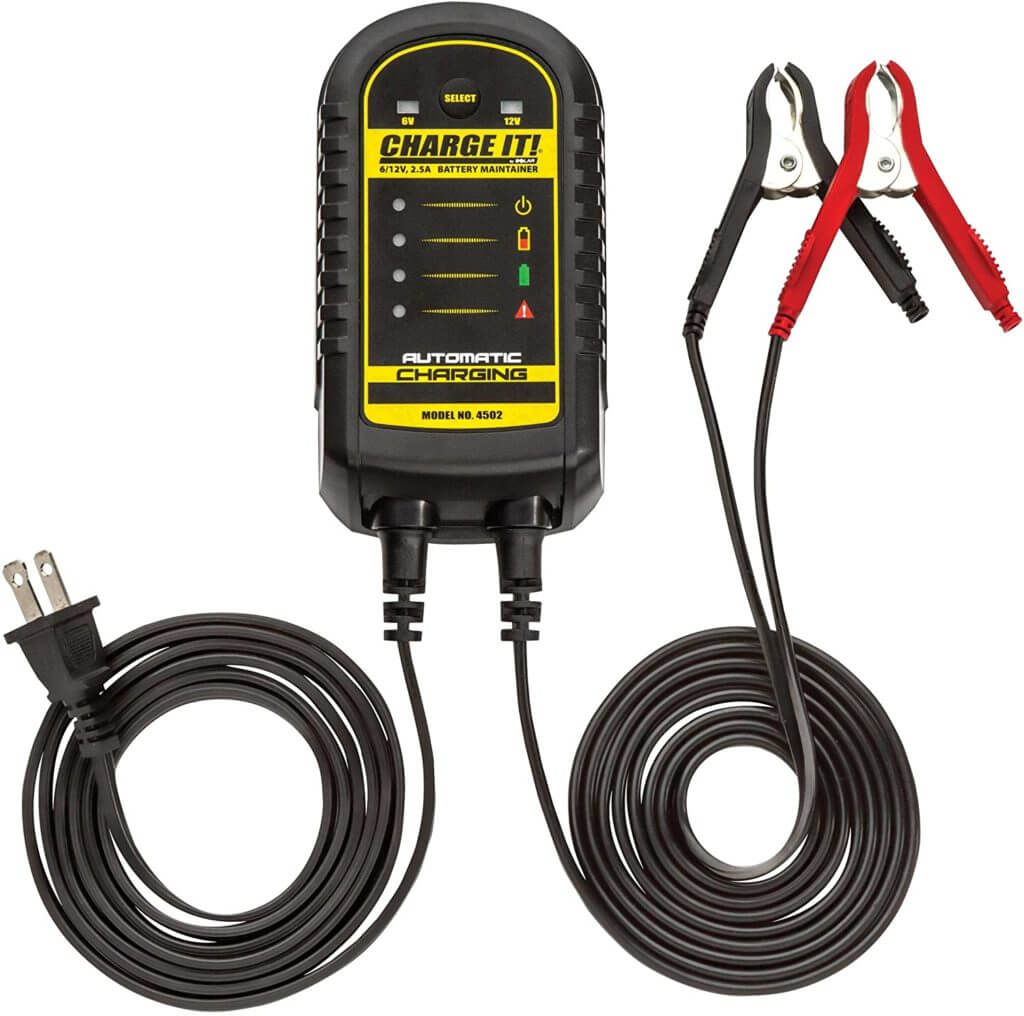
Clore CHARGE-IT #4502 Battery Maintainer
now in storage, purchase a battery maintainer. Plug it into a receptacle and connect it to the battery terminals. A battery maintainer periodically checks the battery’s state of charge and automatically recharges it to a full charge.
Battery maintainers cost around $35 and can be purchased from any auto parts store, big-box store or online sellers. Well-known reputable brands include Battery Tender, CTEK, Schumacher, and CHARGE-IT by Clore/Solar. A 2.5-amp battery maintainer provides enough recharging power for all cars, SUVs and light trucks.
If you haven’t stored your vehicle, you can maintain the battery by driving it. Yes, it’s that simple. A 20-minute drive at highway speed once every two weeks will fully recharge your battery and keep it in tip-top condition.
How about starting your car or truck and letting it idle for 10-minutes once every two weeks? Nope! In most cases, 10-minutes isn’t long enough to replace the power lost due to starting while also replacing the power lost due to discharge. In effect, the power lost to starting and the low recharge rate at idling will only cause your battery to be even more discharged.
Worse yet, recharging your battery at idle speed is hard on your car’s alternator/generator, causing it to run hot and fail early. The average cost for an alternator replacement is around $450. So recharging your battery by idling can actually cost more over the long term than simply taking it out for a 20-minute spin on the highway. Why risk costly premature alternator failure when you can recharge your battery by driving the vehicle or using a battery maintainer?
What else you can do to maintain your car during Covid-19
As mentioned above, short trips are incredibly hard on your engine. A cold engine needs a rich fuel mixture to fire up and run. Once running, the engine continues to need a rich fuel mixture until it heats up to around 150°F. During the cold-start1 and warm-up period, some of the excess fuel, along with combustion byproducts water and soot get forced into the crankcase where it mixes with the engine oil. In a normal-length commute, the oil heats up enough to vaporize the fuel and water and the soot gets captured by the oil filter. However, on short trips, the oil doesn’t get hot enough to vaporize the fuel and water and the engine doesn’t run long enough to filter out all the soot. The fuel, water, soot, and oil combine to produce corrosive acids and sludge that oxidizes the oil and reduces its lubricating properties. Once acid and sludge forms, repeated short trips just accelerate the oil degradation process and that increases engine wear.
What can you do to reduce the effects of repeated short trips?
1) Change your oil and filter more often. Short trips are considered “severe service” by carmakers. If you followed the “normal” oil change intervals when you were commuting a long distance to work and you’re now making short trips switch to the severe service oil change intervals listed in your owner’s maintenance guide. In most cases, that means changing your oil twice as often as the “normal” oil change intervals.
2) If you drive short trips and your car maker recommends oil changes every 5,000 or 10,000 OR every 3 months, follow the time interval, not the mileage interval.
3) Take a longer trip once a week. Seriously, a 20-minute drive at highway speeds can vaporize some of the fuel and water in your oil and complete the oil filtration process.
What else can you do to protect your car during Covid-19
Check tire pressure
Tires lose about 1-psi per month under normal circumstances. Plus, tire pressure changes with outdoor temperature changes. For every 10°F change in outdoor temperature, you’ll gain or lose about 1-psi of pressure. Driving on underinflated tires isn’t just dangerous, it’s also a major cause of accelerated tire wear.
Many gas stations offer free air but the air hoses often don’t have gauges or the air hose gauges have been dropped so many times they’re no longer accurate. You can buy a tire pressure gauge at any auto parts or big box store for less than $5. Or, purchase a more accurate battery operated digital gauge that lights up in the dark for a bit more.
Brake rust
Brake rotors are made from cast iron and the friction surfaces 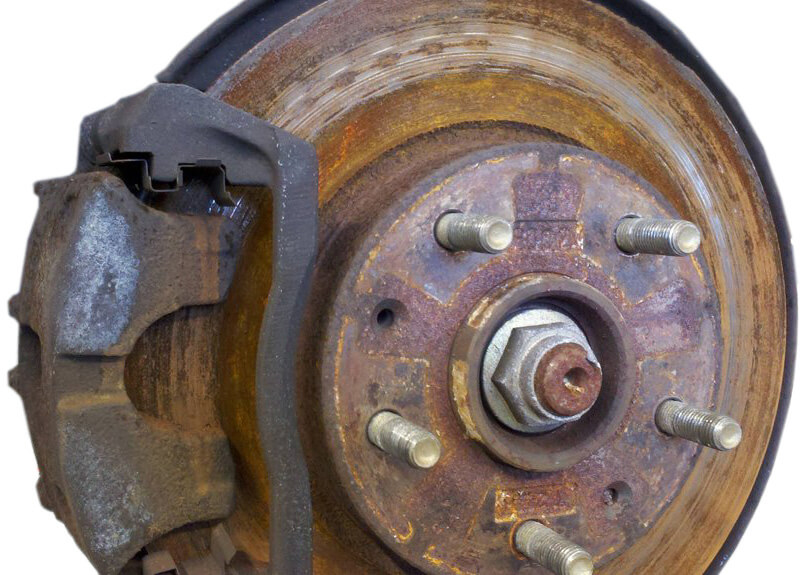 can rust from ordinary humidity. The surface rust rubs off in the first few miles of driving, so surface rust isn’t a big problem. However, when rotors sit for longer periods in humid conditions, the surface rust can begin to pit the rotors and that can cause brake noise and vibration. Worse yet, the steel brake pad backing plates, brake hardware and caliper slide pins can rust during long periods of disuse. Plus, some brake pads contain metallic fibers that can rust and bond the brake pads to the rotor. You can prevent pad bonding and break up severe rust formation by driving the vehicle every few weeks with several firm brake applications to wipe off the surface rust. Driving your car after heavy rain will heat up the brakes and boil off rain water.
can rust from ordinary humidity. The surface rust rubs off in the first few miles of driving, so surface rust isn’t a big problem. However, when rotors sit for longer periods in humid conditions, the surface rust can begin to pit the rotors and that can cause brake noise and vibration. Worse yet, the steel brake pad backing plates, brake hardware and caliper slide pins can rust during long periods of disuse. Plus, some brake pads contain metallic fibers that can rust and bond the brake pads to the rotor. You can prevent pad bonding and break up severe rust formation by driving the vehicle every few weeks with several firm brake applications to wipe off the surface rust. Driving your car after heavy rain will heat up the brakes and boil off rain water.
Check oil level
All engines burn some amount of oil. That’s why car makers recommend checking your oil level and topping it off with fresh oil when it’s at least a half quart low. 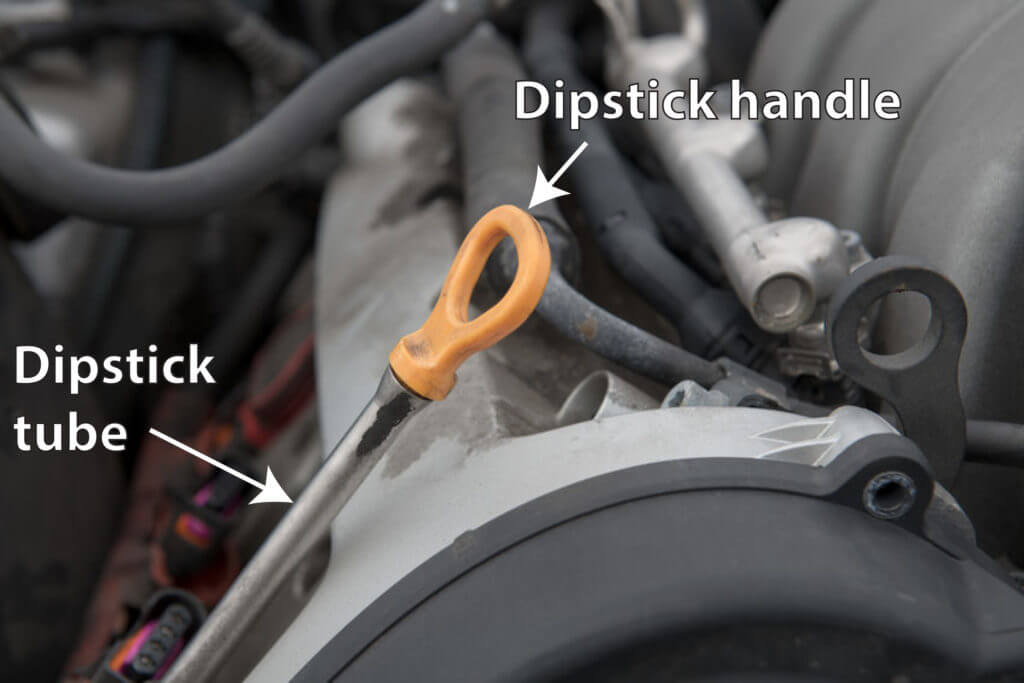 Most drivers don’t check their oil level between oil changes. With longer oil change intervals on new cars, that means most engines are running when low on oil.
Most drivers don’t check their oil level between oil changes. With longer oil change intervals on new cars, that means most engines are running when low on oil.
When you run an engine with a low oil level, you stress the remaining oil. In other words, if your car maker recommends a 7,500-mile oil change interval and you drive while your engine is one-quart low, you reduce the life of the remaining oil by as much as 25%. So your oil may be due for a change by the 5,000-mile mark.
Refer to your owner’s manual to find the type and viscosity of oil recommended for your engine and buy a quart at any auto parts store. Check your oil level at least once a month and add oil when needed.
Check coolant level
Engines don’t use up coolant, but they can develop coolant leaks.
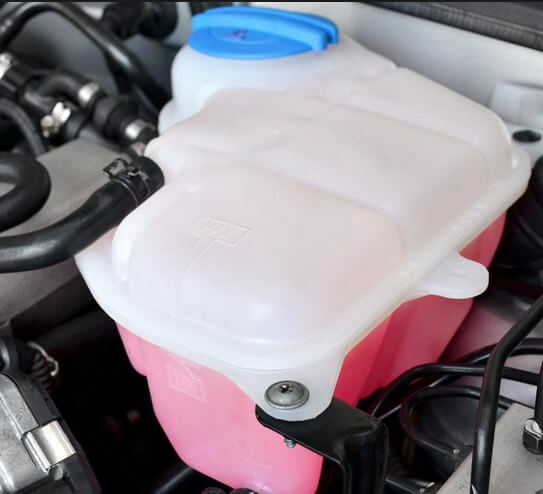
Check coolant level in recervoir
If you operate your engine when it’s low on coolant, you risk overheating which causes the cylinder head to warp and the head gasket damage to fail. A head gasket replacement can cost almost $2,000 so it pays to check your coolant level at least once a month. If it’s low, you’ve got a leak. Get it to a shop and have them find and fix the cause of the leak. The leak repair will cost far less than a failed head gasket repair.
Check for critters
Critters are always looking for new digs that are quiet and cozy. The top of your engine and the cabin filter areas inside your car are their favorite spots because they’re quiet and provide protection from the elements. In other words, when your vehicle sits for long periods, it’s like posting a “FREE LODGING” sign for rodents everywhere.

Home Sweet Home on your cabin air filter.
Rodents sometimes bring their own bedding materials, but they’re not at all shy about ripping up the underhood insulation, carpet batting or foam insulation. Worse than that however, they love to snack on the yummy soy-based wiring insulation located throughout your late model vehicle. Wire harness damage can easily cost $500 to $1,000 to fix, so it pays to evict critters early and often.
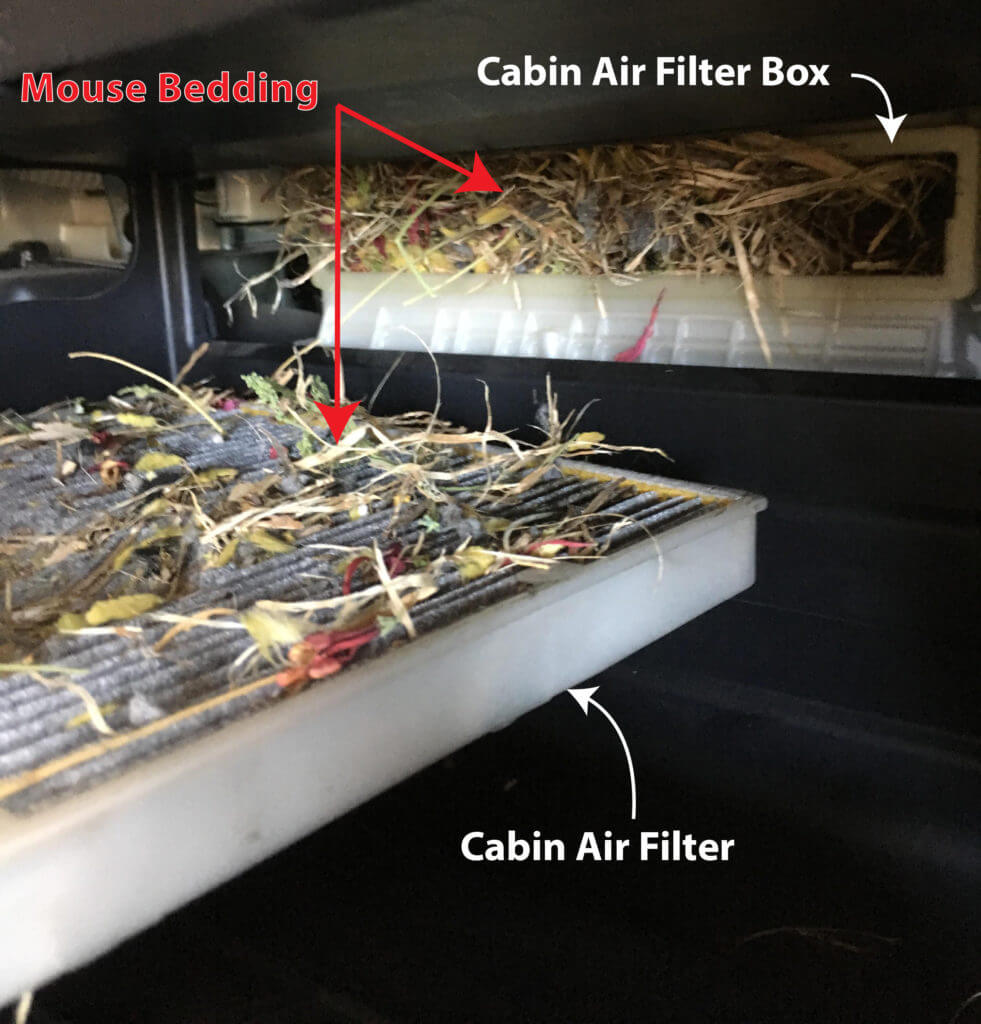
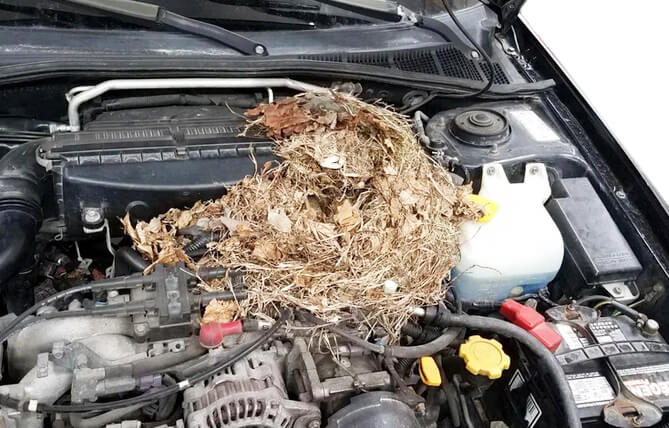
Squirrel nest?
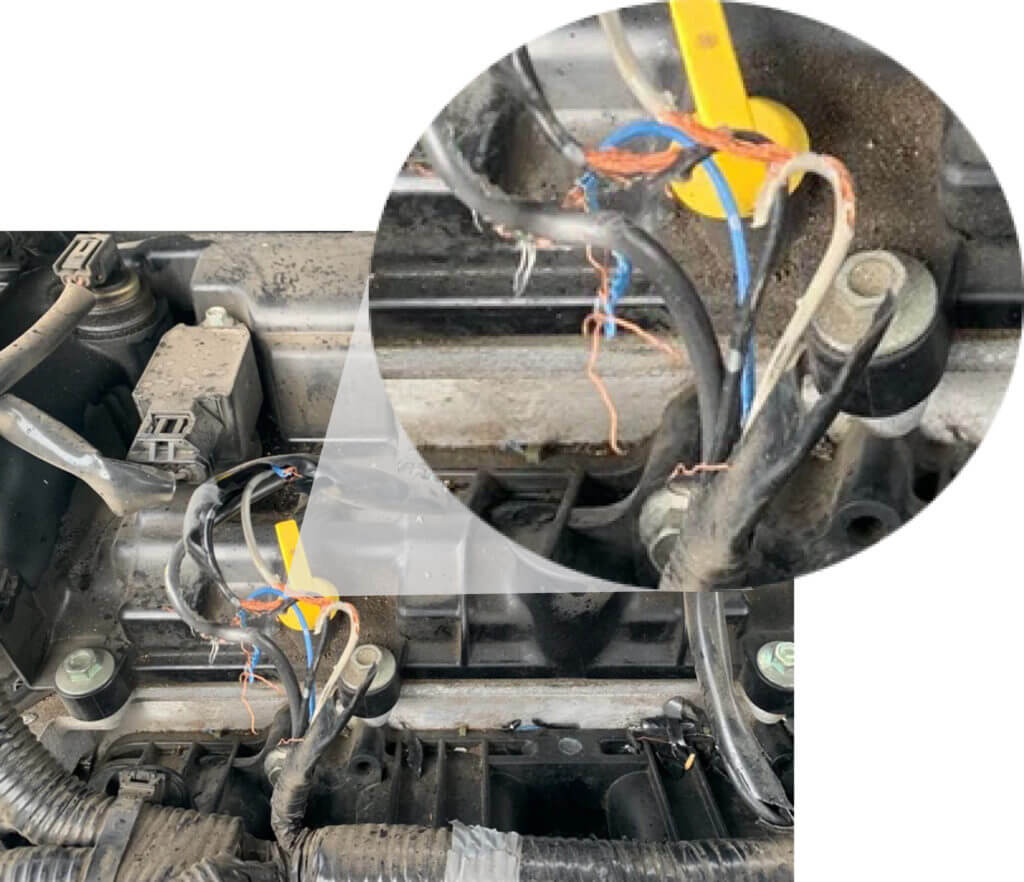
Chewed wires cost $$$ to repair
Pop the hood every few weeks and remove any signs of a nest. Then remove your car’s cabin air filter and check for the tell-tale signs of rodents.
1. A cold start is defined as an engine start after the engine has been idle for three or more hours.
Store your vehicle and save money
If you’ll be working from home long into 2021 and really don’t need a second vehicle for a while, consider storing it in a professional storage facility. It’ll be safe, away from the elements and you can reduce the insurance coverage (in most cases.) For more information on vehicle storage, see this post from Direct Express Auto Transport.
©, 2020 Rick Muscoplat
Posted on by Rick Muscoplat
